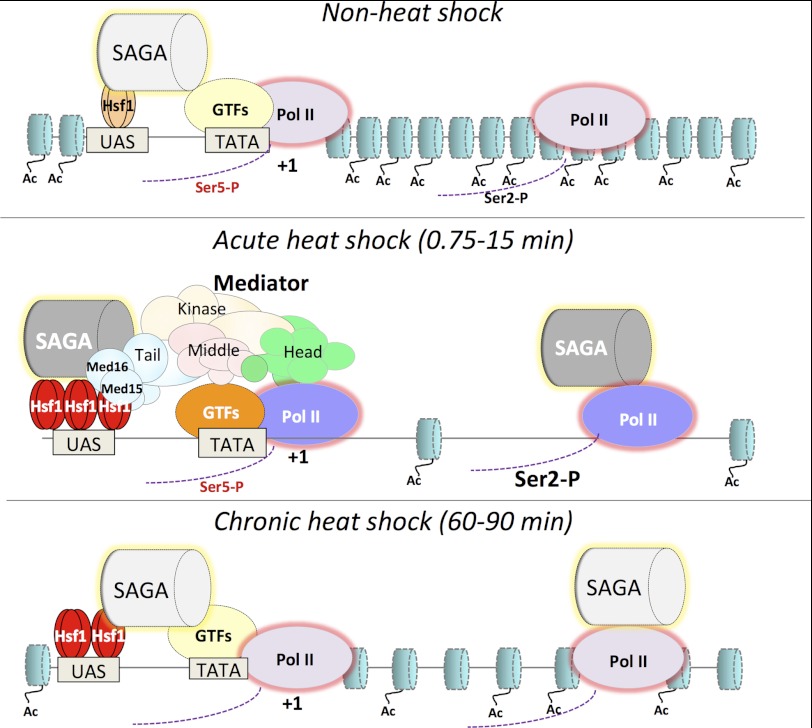FIGURE 9.
Factor occupancy of a typical yeast HSP gene under non-inducing, acutely inducing, and chronically inducing conditions. The location and abundance of the indicated factors, as inferred from kinetic ChIP assays (this study and Refs. 21, 38, 57, 70, 75), are depicted. The increase in fractional occupancy is symbolized by an increase in the number of symbols (Hsf1, nucleosomes) and/or boldness of font and color. Note that the enhanced promoter occupancy of Hsf1, Mediator, SAGA, Pol II, and general transcription factors (GTFs) in response to heat shock is very rapid and may occur in a nearly simultaneous fashion. Although Mediator occupancy of HSP genes in non-induced and chronically heat-shocked cells is typically <10% of that seen in acutely induced ones (e.g. see Figs. 1 and 5), other factors may be present, albeit at reduced levels, under these conditions (e.g. see Fig. 6) and are so indicated. In addition, whereas Mediator is exclusively recruited to the promoter, SAGA is recruited to both promoter and coding regions (57). Disc-shaped objects, nucleosomes; Ac, hyperacetylated forms of H3 and H4; Ser2-P and Ser5-P, phosphorylated CTD forms of Pol II (phospho-CTD states have not been determined for chronic heat shock conditions).

